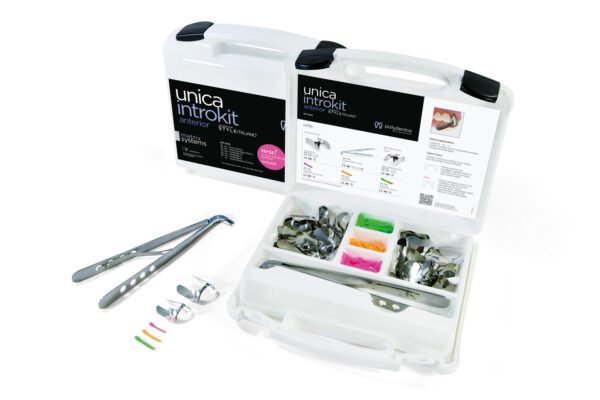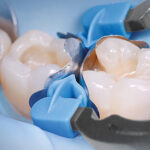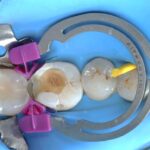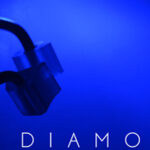16 Jul Dr. Lazar – Class IV restoration – Unica anterior
class IV restoration with Unica anterior
by Dan Lazar

Dr. Dan Lazar
Dan Lazar, graduated from the Faculty of Dentistry in 2005 in Cluj-Napoca, Romania, followed by many post-graduate trainings in prosthetic and restorative dentistry in Romania and Europe. From 2007-2009 he was teaching at the Faculty of Dentistry, Iuliu Hatieganu Cluj-Napoca,at the Restorative department. Since 2005-2016 is working in a private practice in Oradea, Romania. From 2016 he work in his private dental clinic- Clinica LAZAR. Since 2015 he is an Style Italiano member.Dan Lazar is lecturing in Romania and abroad since 2009 on different topics: direct composite restorations, anterior prosthodontics and dental photography.
case report
The patient came to our attention for esthetic rehabilitation; the analysis revealed an old damaged composite restoration that should be replaced on both incisors 11 and 21.
The following case shows the step-by-step direct composite restoration using the Polydentia’s Unica anterior matrix powered by Style Italiano.
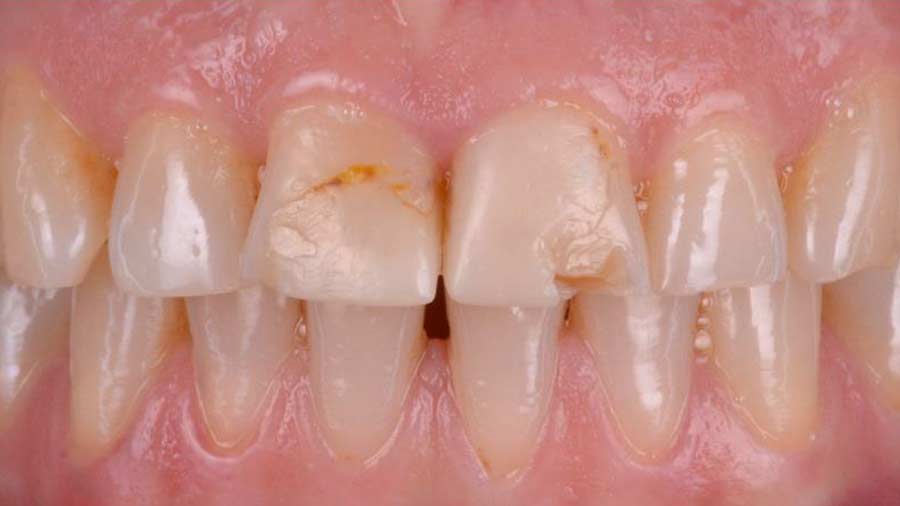
1: Pre-operative view of incisors 11 and 21 showing the old composite restorations which should be replaced.
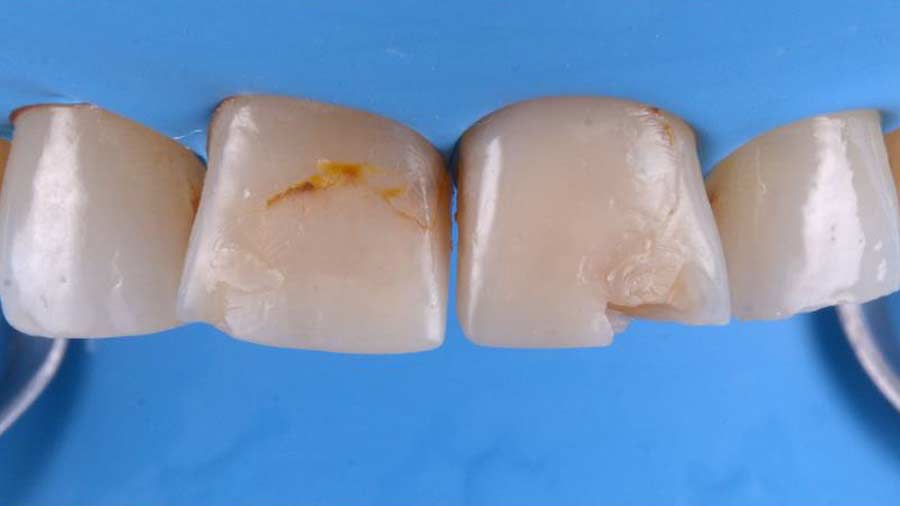
2: The quadrant under isolation.
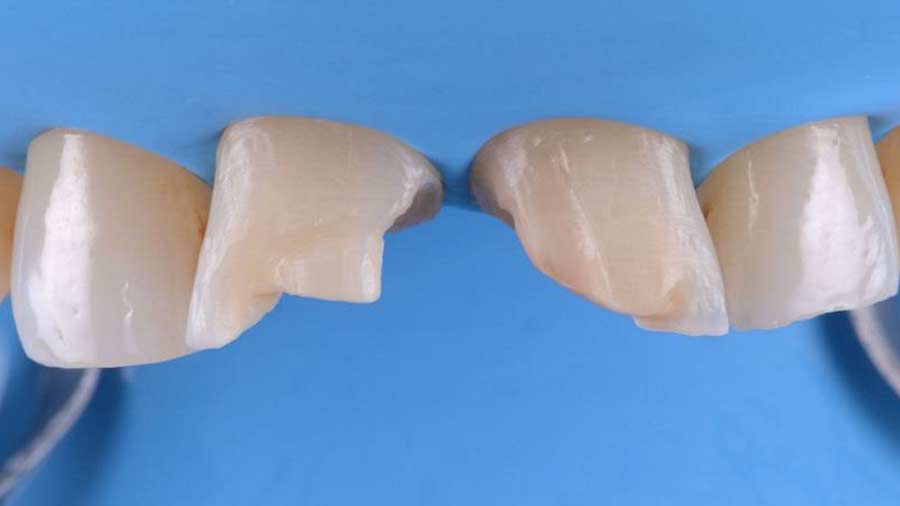
3: The clinical situation after removal of the old restorations and cleaning of the proximal area.
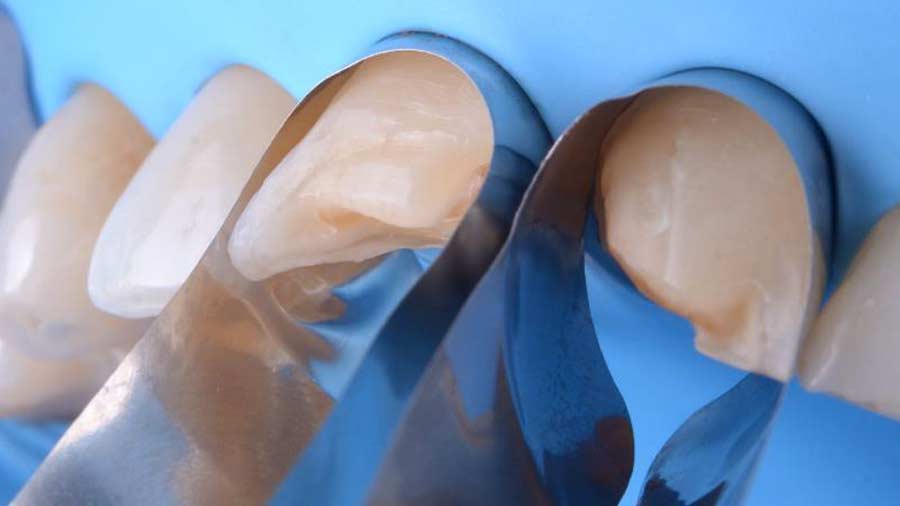
4: Unica anterior matrices placed on both incisors 11 and 21. The contoured shape of the matrices embraces the teeth and help the practitioner to better see where the midline is placed. In this case, the stability of the matrices itself does not require wedges or myCustom Resin to stay in position.
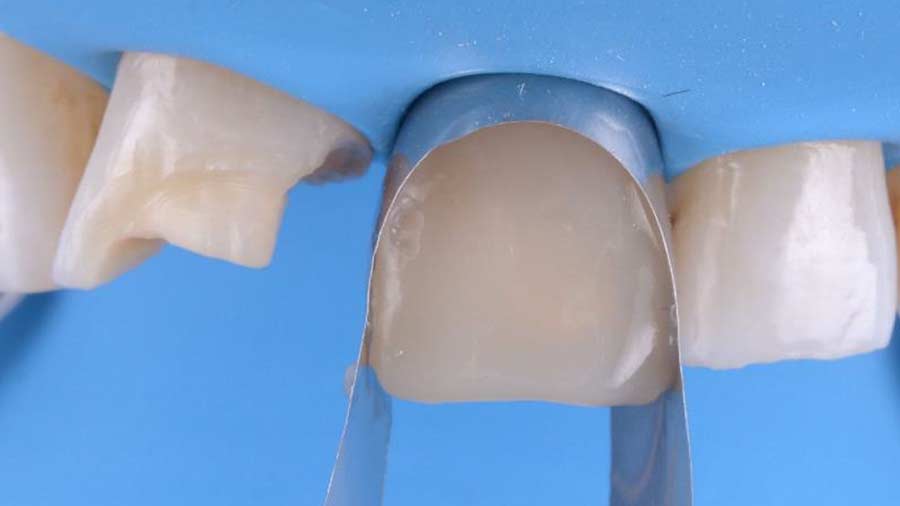
5: Incisor 21 has been restored first; this image shows the proximal edges built up.
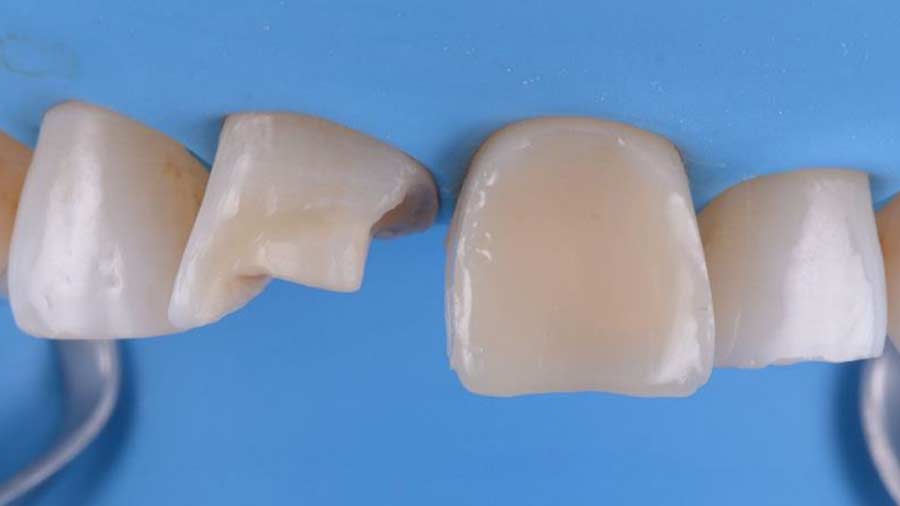
6: Incisor 21 after the removal of Unica. The contoured proximal walls of the matrix ensure an accurate proximal morphology with minimal or no contouring.
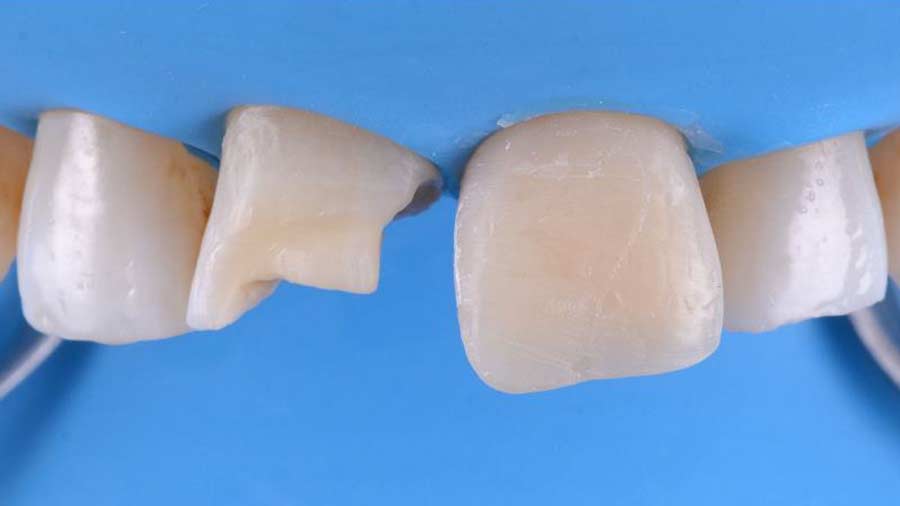
7: Incisor 21 after the contouring process of the restoration. For this stage the best is to finish the proximal area precisely because of the easy access of the instruments.
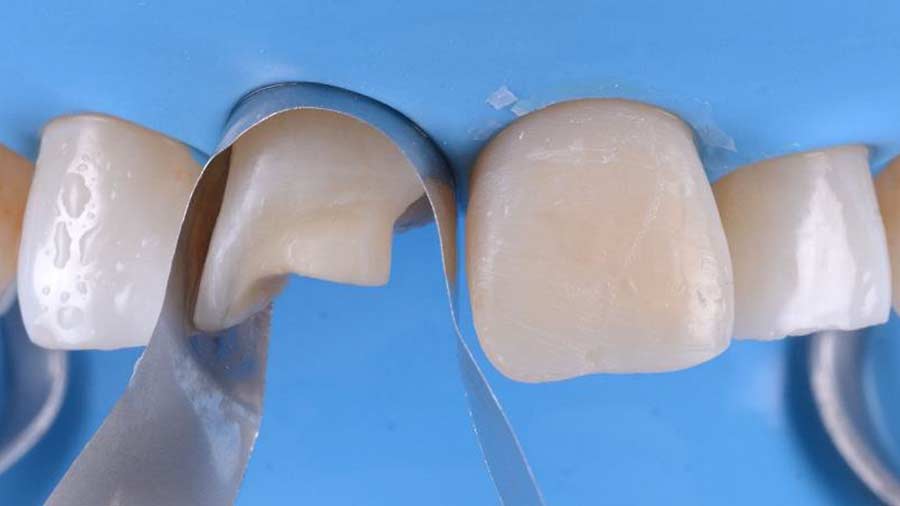
8: Incisor 11 has been restored following the same procedure.
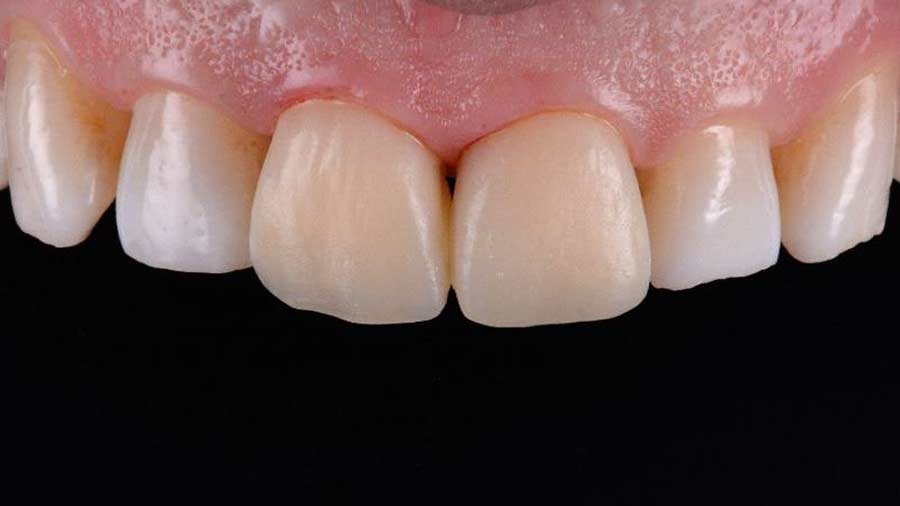
9: The clinical situation after the reconstruction of the incisors surfaces and initial finishing and polishing.
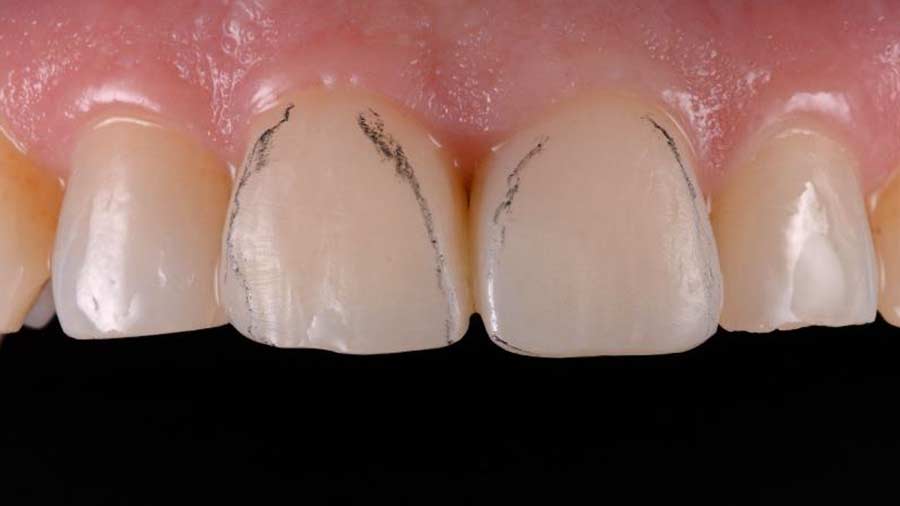
10: Final finishing and polishing procedure, transition lines after the hidratation of the composite. This step is essential to obtain a visual appearance of the restorations that will please the patient.
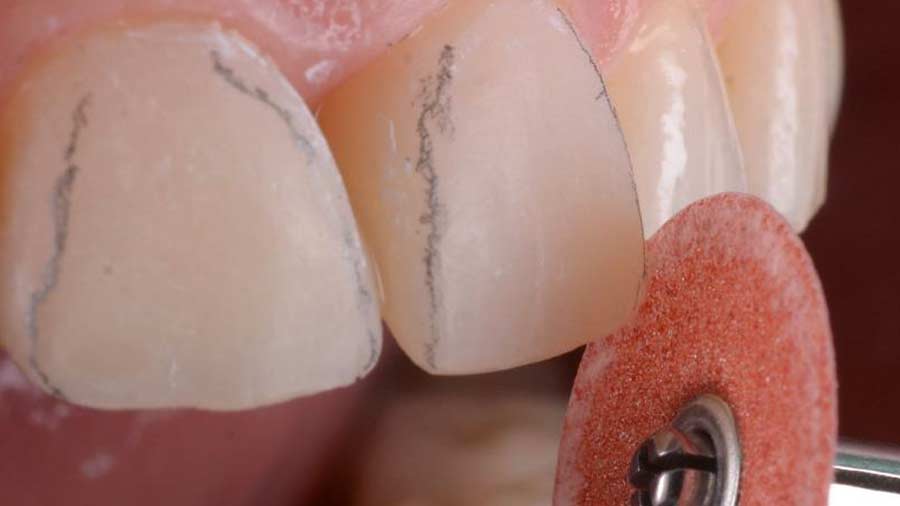
11: Polishing discs are used to adjust the mesial and distal line angles.
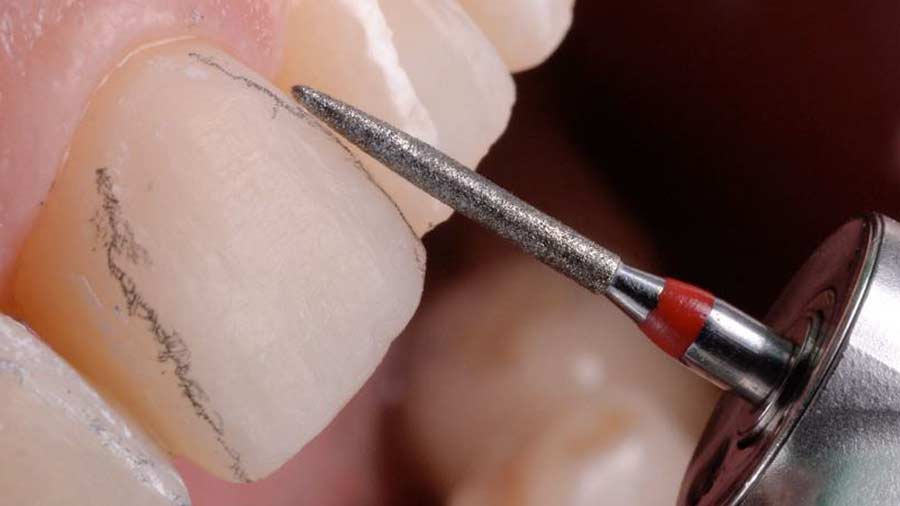
12: A red tapered fissure bur is used to adjust the primary morphology of the tooth.
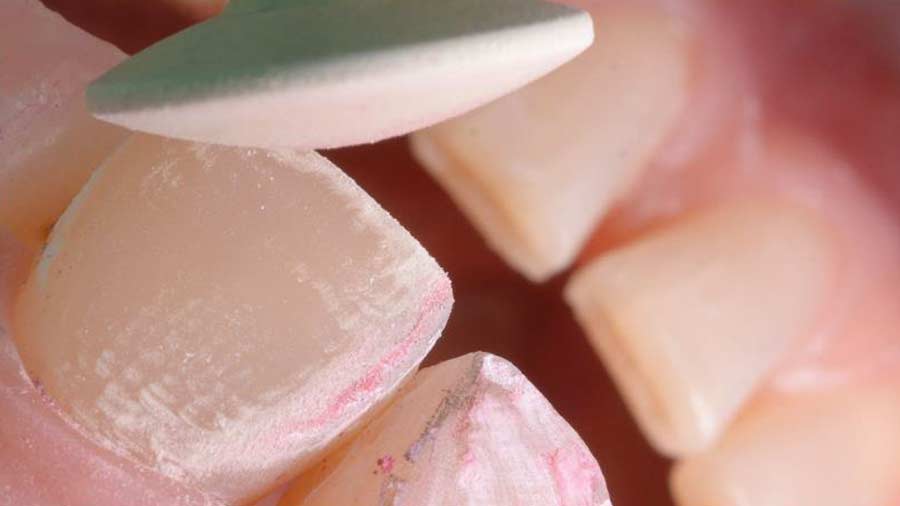
13: For finishing the second morphology a hard rubber with low speed is used to smooth the surface.
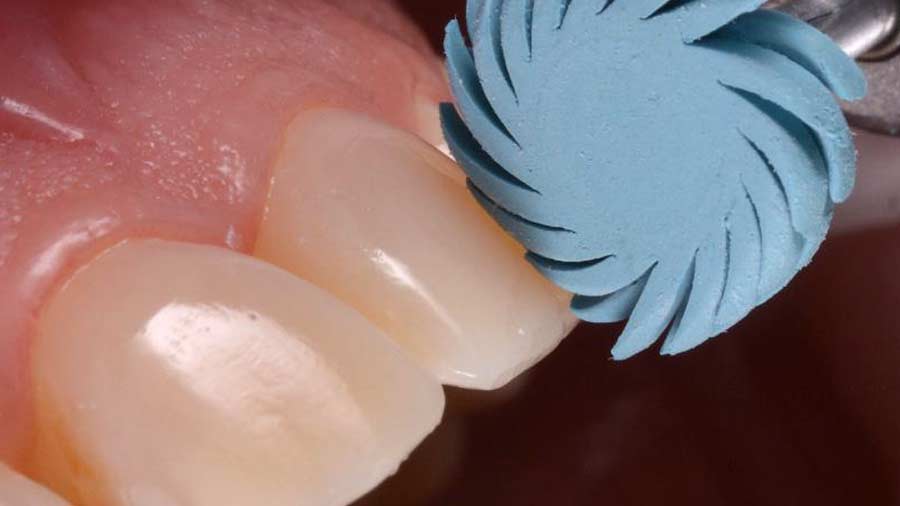
14: Final polishing of the restoration using a thermoplastic wheel.
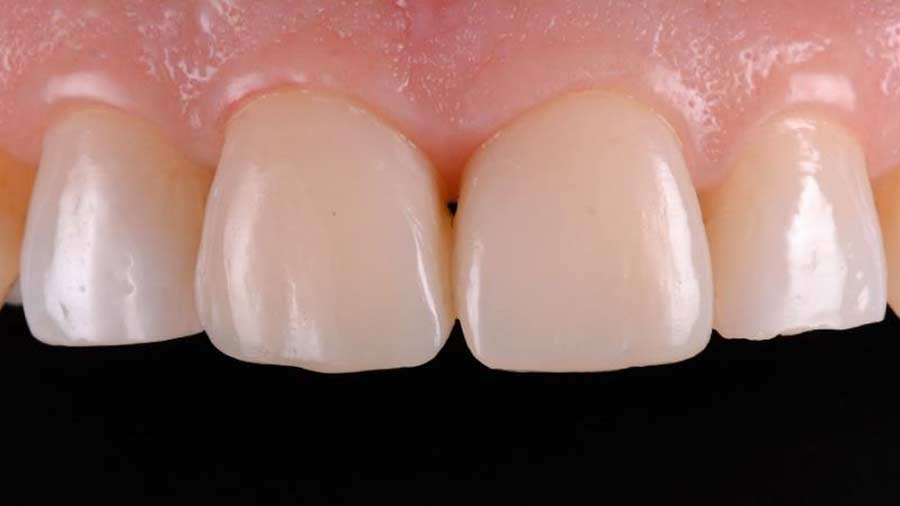
15: Final outcome after the occlusal adjustments in static and dynamic movements.
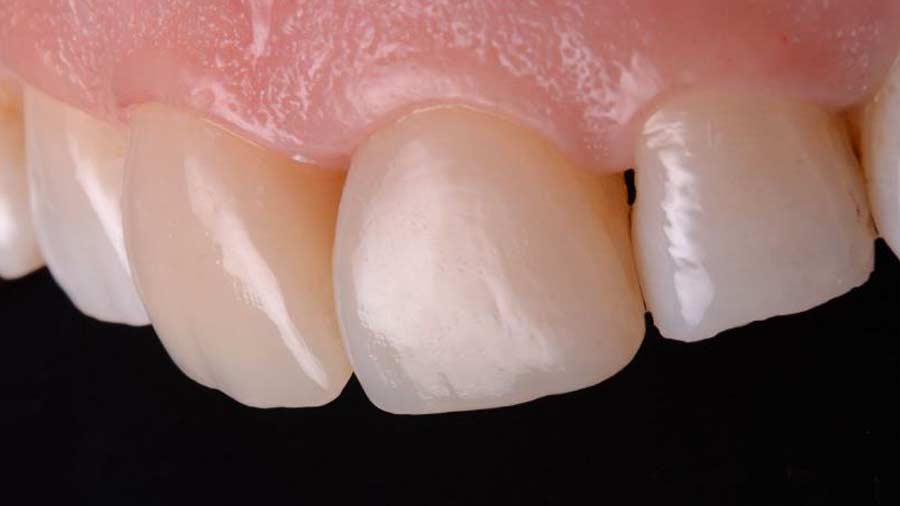
15: Final outcome, side view. The restoration was made in two sessions, one session for reconstruction and primary finishing (1,5h) and the second appointment for final finishing and polishing (45 min).
conclusion
The contoured shape of the Unica anterior powered by Style Italiano allows the clinician to restore the natural proximal and cervical morphologies at the same time in a very predictable way, making the matrices a very useful product for anterior restorations.
other clinical cases
-
Class II adjacent cavities on 1st and 2nd molars – QuickmatFIT anatomical sectional matrices & myRing Forte – Dr David Gerdolle
A 28-year-old female patient, without any systemic medical conditions presented with a carious lesion affecting both molar 46D and 47M. The following case illustrates the direct composite restoration of the lesion using the Polydentia QuickmatFIT anatomical sectional matrices in combination with myRing Forte and myWedge plastic v-shaped wedges....
-
Class II cavity direct composite restoration on a young permanent premolar – myClip 2.0 – Dr Marina Papachroni
For young patients rebuilding the anatomy in class II cavity restorations is a major issue but not making too many occlusal adjustments after finishing the layering procedures is one of the same importance aspects. The following images show the step-by-step treatment we performed for treating decay on the upper first premolar of a 15-year-old teenager. ...
-
Class II cavity direct restoration on young permanent molar with myQuickmat Forte – Dr Marina Papachroni
Class II (interproximal) decay involves the proximal surface of a posterior tooth and it is a common occurrence in many dental patients. One challenge for the clinician is to accurately recreate a physical contact to the adjacent tooth and, at the same time, to restore proper interproximal anatomic form. This case involves a teenager 16 years old with an interproximal lesion in his left lower molar (#36)....
-
Class II direct composite restoration on first premolar – QuickmatFLEX sectional matrices and myClip Junior – Dr Marina Papachroni
A male teenager came to our office feeling pain in the upper left quadrant. We proceeded with a Class II restoration of the first premolar without removing brackets. The following images show the step-by-step direct composite restoration procedure using the premolar sectional matrix QuickmatFLEX in combination with the paediatric sectional matrix ring myClip junior. ...
-
Class II restoration of a primary molar – myRing Junior – Dr Sabová
The young patient came for a periodic checkup. After a preliminary analysis we found a class II mesial carious lesion on primary molar 6.5. Since the dimensions of the carious lesion were limited, we decided to proceed with a direct composite restoration procedure using myJunior kit from Polydentia. ...
-
Class II restoration on a first molar – QuickmatFIT anatomical sectional matrices and myRing Forte – Dr Cristian Scognamiglio e Dr Alessandro Perucchi
The patient came for a consultation complaining of discomfort at tooth 36 when chewing. Molar 36 presented a very old composite restoration with initial disto-occlusal infiltration. We decided to carry out an OD restoration that also involved the buccal surface in order to replace the filling with a new aesthetic restoration. In this clinical case, we illustrate the procedure for the step-by-step restoration of tooth 36 using the Polydentia QuickmatFIT Molar sectional matrix in combination with the myQuickmat Forte sectional matrix ring....
-
Class II restoration on second bicuspid – myQuickmat Forte kit – Dr. Chiodera
The Polydentia myQuickmat Forte kit is a very effective system for posterior class II restorations....
-
Diamond24, 24 solutions for your restorations of Class II cavities
Diamond24 and myRing Classico: 24 solutions for your Class II restorations. Read the article written by Dr. Chiodera, which explains how to get great contact points with Diamond24 and myRing Classico for Class II cavity restorations. ...
-
Dr. Chiodera – Class III restoration – Unica anterior
The patient came to our attention for a regular check. A first analysis revealed a class III carious lesion on incisor 21. We decided to eliminate the carious lesion and proceed with a direct composite restoration of the cavity....
-
Dr. Chiodera – MOD restoration on first Molar – myQuickmat Classico kit
The Polydentia myQuickmat Classico kit is a very efficient system for posterior class II restorations....

